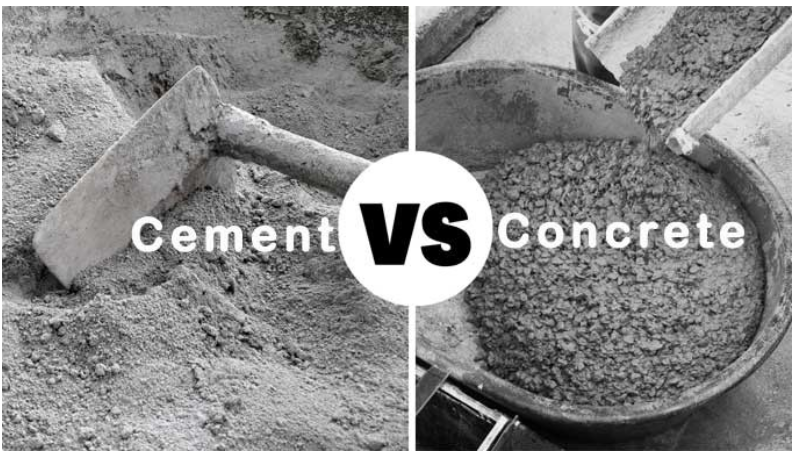Understanding
the difference between Cement & Concrete
Understanding the Difference Between Cement and Concrete: Unveiling the Secret Ingredients of Modern Construction
Imagine building your dream house. You have a vision of a sturdy, stylish home where your family will create lifelong memories. As you delve into the construction process, you come across two essential terms: cement and concrete. Many people mistakenly use these words interchangeably, but at GreyForce Cement, we know that understanding their differences is key to building solid, durable structures. So, let’s embark on a journey to uncover the secrets behind these fundamental materials!
What Exactly is Cement?
Think of cement as the unsung hero of construction. It’s a fine powder made from limestone, clay, shells, and silica sand. These ingredients are heated to form a substance called clinker, which is then ground into a fine powder and mixed with a bit of gypsum. This mighty powder is what we call cement. While there are various types, the most common is Portland cement, named after the limestone cliffs on the Isle of Portland in England.
Cement is a binder, a magical substance that sets, hardens, and glues other materials together. It’s like the glue in your craft box, but for building skyscrapers! Alone, it’s not used much in construction, but when mixed with water, it starts a chemical reaction called hydration, which causes it to harden and become incredibly strong over time.
Unveiling the Mystery of Concrete
Now, let’s talk about concrete—the superstar of the construction world. Concrete is a composite material, a blend of cement, aggregates (like sand, gravel, or crushed stone), and water. This combination creates a versatile, robust material that forms the backbone of countless structures around us.
Here’s the simple recipe for concrete:
- Aggregates (fine and coarse): They provide the bulk and strength.
- Cement: Acts as the binder that holds everything together.
- Water: Kickstarts the chemical reaction that hardens the mixture.
Concrete is everywhere! It builds our homes, bridges, roads, and even those towering skyscrapers that define city skylines. Its versatility and strength make it indispensable in construction.
Cement vs. Concrete: The Ultimate Showdown
Let’s break down the key differences between these two construction giants:
- Composition:
- Cement: It’s like the flour in a cake—made from limestone, clay, and other materials ground into a fine powder.
- Concrete: The cake itself! A mixture of cement, aggregates, and water.
- Usage:
- Cement: The binder that brings other materials together. It’s never used alone but is essential in concrete and mortar.
- Concrete: The go-to construction material for structures ranging from cozy homes to massive bridges.
- Properties:
- Cement: Sets and hardens through a chemical reaction with water.
- Concrete: Gains strength over time as the cement binds the aggregates.
Why Does This Matter?
Understanding the difference between cement and concrete is crucial for making smart construction choices. Using the right material ensures that your structures are safe, durable, and long-lasting. Cement alone can’t provide the strength needed for large constructions, but when combined with aggregates to form concrete, it can withstand significant weight and pressure.
Building the Future with GreyForce Cement
At GreyForce Cement, we’re passionate about providing Expert-quality cement that transforms your construction dreams into reality. Our products are designed to deliver exceptional binding properties, ensuring your concrete mixtures are strong and reliable. Whether you’re a professional builder or a DIY enthusiast, knowing the role of cement in concrete can help you achieve the best results.
Contact our team of experts to learn more about how GreyForce Cement can support your construction projects. Together, let’s build a future that stands the test of time!

